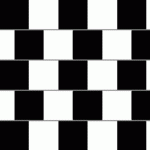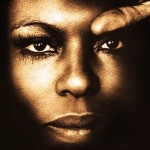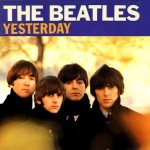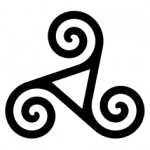Lowercase Symbols
 When I was eighteen and just started playing the piano, I talked to my somewhat eccentric uncle, who was a fanatic amateur musician. He told me I should write minor chords using lowercase letters. Being impressed by his overwhelming personality, I followed his advice. And it is not a bad idea! It matches the way major and minor keys are sometimes notated in classical music (especially in European countries). For example, a violin concerto would be in D-major or in d-minor. And using uppercase and lowercase matches the way scale degrees are commonly notated.
When I was eighteen and just started playing the piano, I talked to my somewhat eccentric uncle, who was a fanatic amateur musician. He told me I should write minor chords using lowercase letters. Being impressed by his overwhelming personality, I followed his advice. And it is not a bad idea! It matches the way major and minor keys are sometimes notated in classical music (especially in European countries). For example, a violin concerto would be in D-major or in d-minor. And using uppercase and lowercase matches the way scale degrees are commonly notated.





 Last week I gave a workshop on arranging and we worked on writing the middle parts in a homophonic score. The song we used was Killing me softly. I had written out the melody in the soprano and a bass line in the bass voice. The instruction was to fill in alto and tenor:
Last week I gave a workshop on arranging and we worked on writing the middle parts in a homophonic score. The song we used was Killing me softly. I had written out the melody in the soprano and a bass line in the bass voice. The instruction was to fill in alto and tenor: When you start writing a vocal arrangement, as far as I’m concerned, the key signature is not fixed. In most cases, first you decide which voice group will be singing the lead. Then you decide on the height of the melody and from that follows the key. Classical musicians often disagree with this way of working. In their opinion the key signature of a piece of music is fixed, because it’s a deliberate choice of the composer. And even in pop and jazz, they don’t dare to change the key.
When you start writing a vocal arrangement, as far as I’m concerned, the key signature is not fixed. In most cases, first you decide which voice group will be singing the lead. Then you decide on the height of the melody and from that follows the key. Classical musicians often disagree with this way of working. In their opinion the key signature of a piece of music is fixed, because it’s a deliberate choice of the composer. And even in pop and jazz, they don’t dare to change the key. Some time ago I was working drawings of beating patterns. In earlier messages I showed my version of the three-beat and four-beat patterns. Here are some new patterns. To start with, here is the two-beat pattern:
Some time ago I was working drawings of beating patterns. In earlier messages I showed my version of the three-beat and four-beat patterns. Here are some new patterns. To start with, here is the two-beat pattern: In this warm-up exercise the choir is singing a melody in major, next in minor and finally in major again:
In this warm-up exercise the choir is singing a melody in major, next in minor and finally in major again: